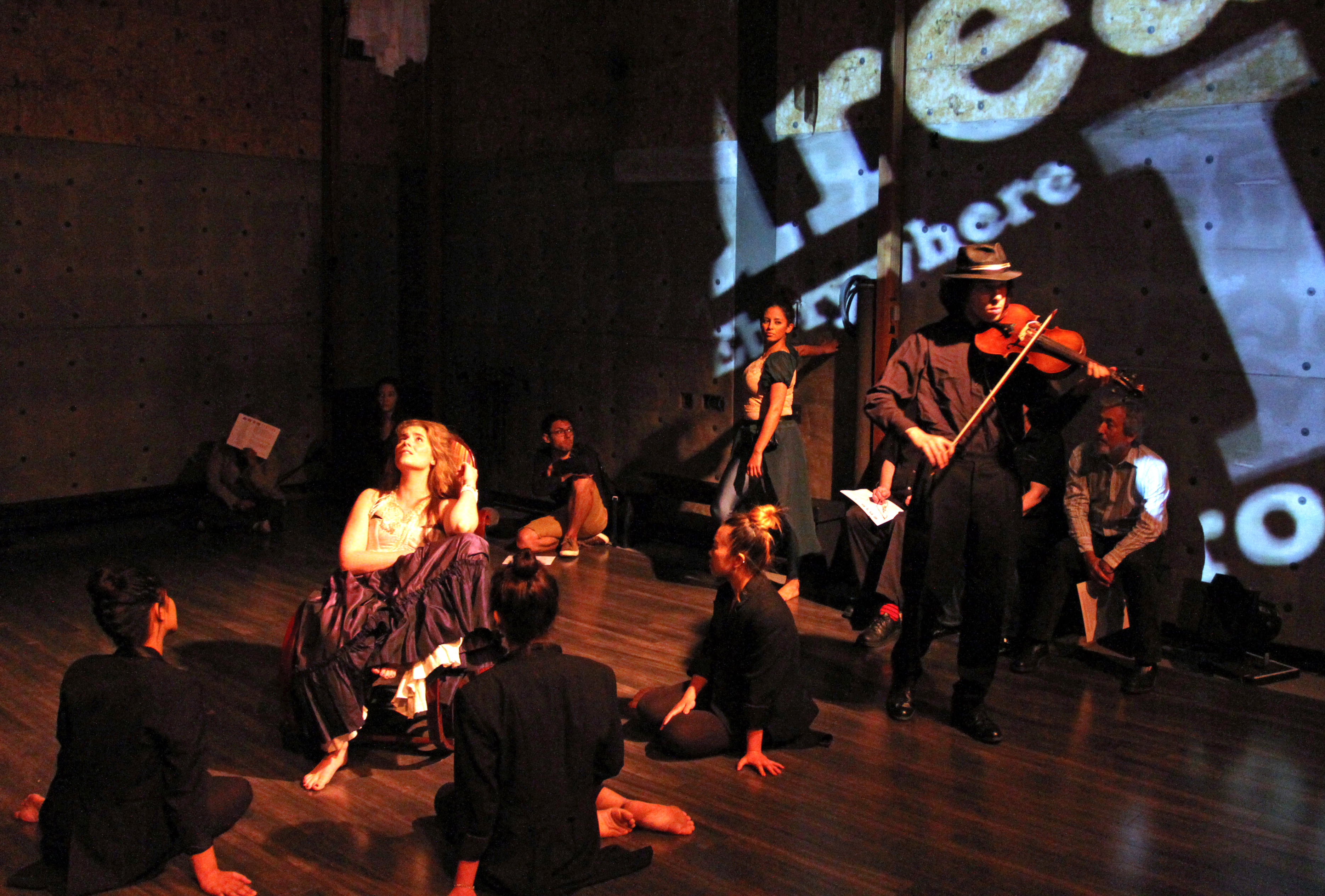Correction: The original version of this article contained an error. While Bush recited the poem, projectors displayed segments of the movie “Gone with the Wind,” mixed with images of African American history, ranging from the Jim Crow laws up until Halle Berry received an Oscar.
Audio from George W. Bush’s speeches was spliced to form the words of Langston Hughes’ poem “Minstrel Man,” which played out into the room of about 40 audience members. While Bush recited the poem, projectors displayed segments of the movie “Gone with the Wind,” mixed with images of African American history, ranging from the Jim Crow laws up until Halle Berry received an Oscar.
This multimedia reinvention of the movie “Gone With the Wind” was the culmination of a yearlong graduate seminar at the UCLA School of Theater, Film and Television. The seminar examined pertinent and poignant topics from the film that are still relevant today.
Because of the film’s status as an American favorite, people can overlook the issue of racial misrepresentation and sexist gender roles in the movie, said Anna Creagh, a culture and performance graduate student in the course.
The final production, which had two runs on May 11 and 13, explored such issues and was meant to integrate a variety of different performances and disciplines, said Jeff Burke, one of three professors for the course.
“The remix was a live performance that included remixed elements of the film, of its musical score, of related books and texts and of events in contemporary culture that had related themes,” Burke said.
“The live performance included acting, dancing, music, multimedia, technology and one of our experimental spaces.”
The show was performed in a relatively cozy space, and the intimate setting helped to accomplish the goal of fully immersing the crowd in “Gone with the Wind,” Creagh said.
Students also used a double screen and projectors so that when audience members filed into the performance space, their shadows were incorporated with images from the film.
The total submersion of the audience in the film culture is a reminder that many of the issues in the film from the 1860s are still at large in contemporary society, Creagh said.
“We want them to see the issues that existed at the time and the issues that still persist in our culture that people don’t really want to look at,” said Janell Rohan, a graduate student at the School of Theater, Film and Television.
In fall quarter, classes were devoted entirely to critically analyzing “Gone with the Wind.”
“The point was to draw contemporary parallels and question the status of that film in American history,” Creagh said.
“From my point of view it was a chance to knock the film off its pedestal.”
Creagh, who grew up in North Carolina, said she was accustomed to people revering the film as an accurate depiction of Southern values.
Students also worked to subjectively break down “Gone with the Wind” through the written word, looking to literature that presented different perspectives.
Creagh, alongside fellow graduate student Rohan, drew largely from Alice Randall’s “The Wind Done Gone.”
The book creates a fictitious narrative within “Gone with the Wind” through the eyes of a mulatto slave girl named Cynara, the illegitimate child of Scarlett’s father and the character Mammy.
Laura Karpman, a visiting professor who taught the course, said working closely with such a small, intimate group of students for a whole year was an eye-opening experience to their capabilities.
As one of the student directors, Creagh, who said she thought her main contribution to the project would involve her background in folklore, found herself learning how to use a professional camera and editing programs such as Final Cut Pro.
Similarly, Rohan found herself doing a live performance in the final show despite the fact that she had no acting background.
“It was really fascinating to see students work outside their comfort zones, outside their disciplines and really stretch past what even they thought they could do,” Karpman said.
